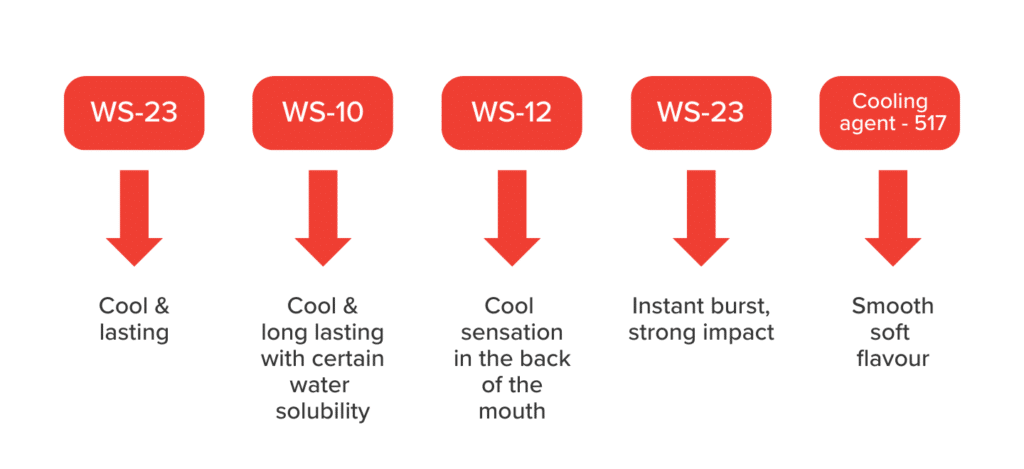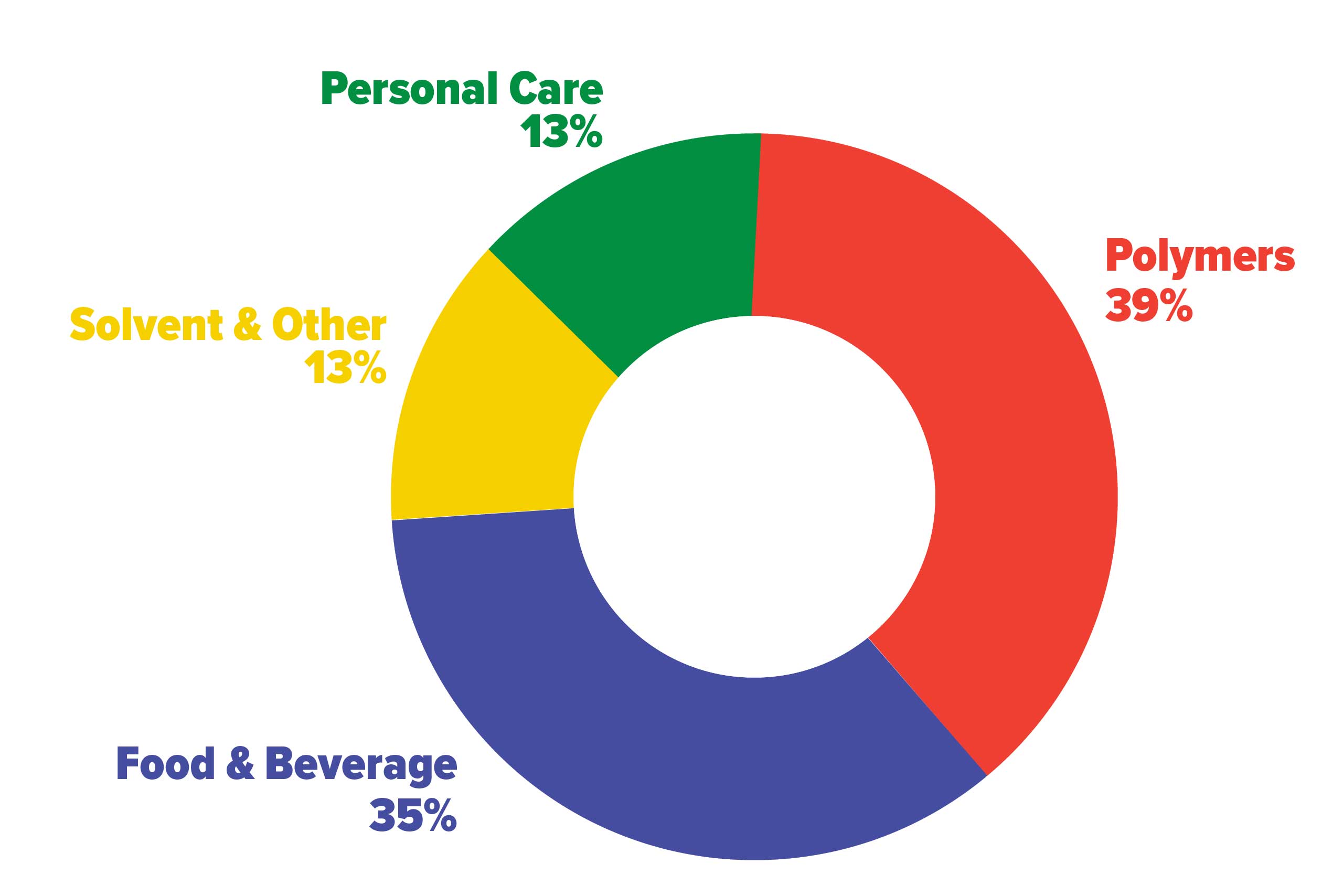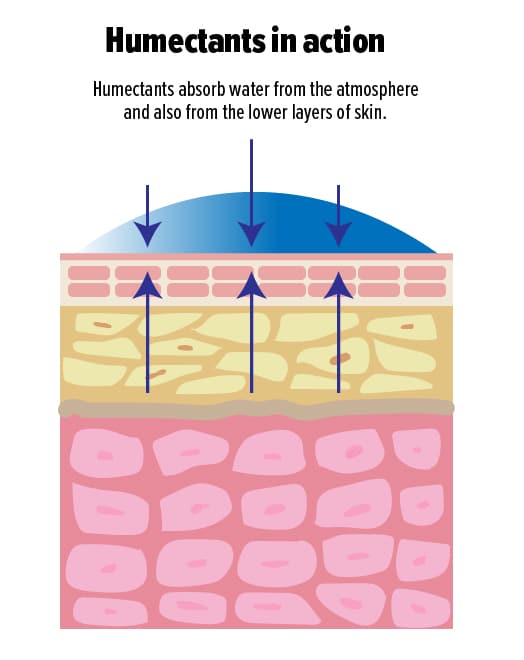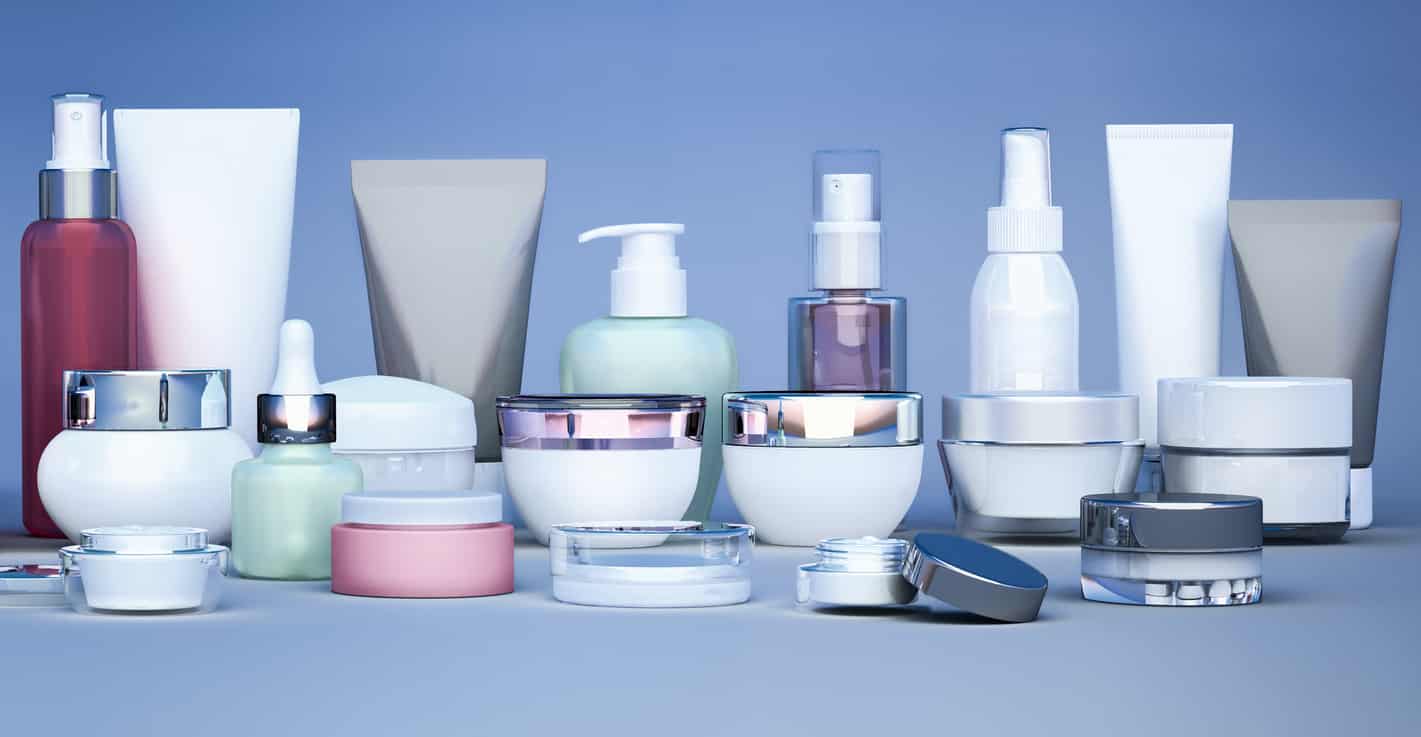Peppermint oil, extracted from the peppermint plant (Mentha × Piperita), has been cherished for its refreshing fragrance and diverse applications across various industries. From ancient remedies to their role in delightful cuisines, let’s delve into the history, uses, and multiple sectors that have embraced the essence of peppermint oil.
Peppermint, a hybrid mint, is believed to have originated from blending watermint and spearmint. Its use dates back to ancient civilisations, with records of its medicinal properties found in Egyptian tombs dating back to 1000 BC.
The herb and its oil gained prominence in traditional medicine, and their popularity spread across Europe and Asia over the centuries.
Culinary Delights
In the culinary world, peppermint oil is a prized ingredient that adds freshness to various dishes and beverages. From peppermint-flavoured candies to teas, chocolates, and even savoury dishes, its versatile and intense flavour profile has made it a staple in kitchens worldwide.
The cooling sensation it imparts is particularly popular in desserts and confections.
Peppermint oil’s invigorating aroma has also made it a star in aromatherapy and personal care products. Its menthol-rich composition creates a refreshing and awakening atmosphere, making it a common choice for candles, diffusers, bath products, and skincare items.
Medicinal Uses
As mentioned earlier, Peppermint oil has a storied history in traditional medicine for its potential health benefits. Its soothing properties have been used to alleviate digestive issues, relieve headaches, and even ease respiratory discomfort.
Today, it continues to be a popular component in over-the-counter remedies and natural health products.
The pharmaceutical and cosmetic industries extensively use peppermint oil for its therapeutic properties to soothe inflammation, irritation and itchiness on skin and scalp. It can also be found in medicines for indigestion, respiratory issues, and topical analgesics. It also adds a refreshing cooling and soothing effects, to skin care products, shampoos, and oral care items in cosmetics.
Agricultural Applications of Peppermint Oil
Beyond human consumption, peppermint oil plays a role in agriculture. It is often used as a natural pesticide, repelling insects and pests from crops without the need for chemicals.
This eco-friendly aspect has led to the integration of peppermint oil in sustainable farming practices.
How can we help?
Whether you’re in the culinary industry, seeking to enhance your dishes, or in the aromatherapy and personal care industry, aiming to create products that invigorate the senses, we have you covered.
Our peppermint oil is versatile and comes in various package sizes to meet your requirements for applications in pharmaceuticals, cosmetics, agriculture and more.
Contact us today to explore how Redox can be the essential catalyst in your sourcing strategy, providing you with unmatched expertise and top-notch solutions.
Distributed by Redox, Acetone is a seemingly unassuming chemical with a distinctive sweet and pungent odour, is a true chameleon in the world of chemistry. Also known as propanone, this volatile, colourless organic compound has earned its versatile stripes, boasting various applications across various industries. As we delve into the secrets of Acetone, you’ll discover its unique properties and understand why it’s a beloved chemical in fields as diverse as cosmetics, pharmaceuticals, and heavy industry.
Acetone’s simplicity is part of its allure. This unassuming compound consists of just three carbon (C) atoms, six hydrogen (H) atoms, and one oxygen (O) atom, resulting in the chemical formula C3H6O.
It falls under the ketone family, characterised by the distinctive carbonyl group (C=O) within its molecular structure.
Unveiling Its Physical Characteristics
You might know Acetone by its distinct characteristics:
- Clear and Colourless: At room temperature, it’s a clear and colourless liquid, the definition of unobtrusive.
- Sweetly Pungent: Its odour, often described as sweet yet pungent, makes it easily recognisable.
- Low Boiling Point: Acetone boasts a low boiling point, evaporating swiftly at 56 degrees Celsius (133 degrees Fahrenheit), leaving behind its characteristic scent.
- Miscible with Water: This liquid readily mingles with water and a wide array of organic solvents, making it a remarkable and adaptable solvent in its own right.
Applications: Where Acetone Truly Shines
- Solvent Extraordinaire: Its primary role is to be a potent solvent in industrial applications, capable of dissolving various organic compounds. Acetone is the go-to solution for numerous industries, from paints and varnishes to adhesives and synthetic fibres like acrylics and polyester.
- Nail Polish’s Best Friend: If you’ve ever marvelled at how nail polish vanishes quickly, you have Acetone to thank. It’s a crucial ingredient in nail polish removers, making it a staple in the world of cosmetics.
- Chemical Chameleon: Acetone is not content, being just a solvent. It also plays a central role as an intermediate compound in producing various chemicals, including methyl methacrylate, bisphenol-A, and aldol. These compounds are essential in creating plastics, resins, and more.
- Industrial Cleaning Guru: Acetone is a star cleaner and degreaser in heavy industries. Its quick evaporation and dissolving properties make it a valuable asset for cleaning machinery and equipment.
- Pharmaceutical Foundations: You might not suspect it, but Acetone plays a part in producing certain pharmaceuticals. It can even be an excipient in drug formulations.
- Beauty and Cosmetics: Some cosmetic and personal care products benefit from a touch of Acetone as a degreasing or cleaning agent.
- Lab Partner: In the realm of laboratories, Acetone is the trusty sidekick of researchers. It serves as a general-purpose solvent and comes in handy for cleaning lab glassware.
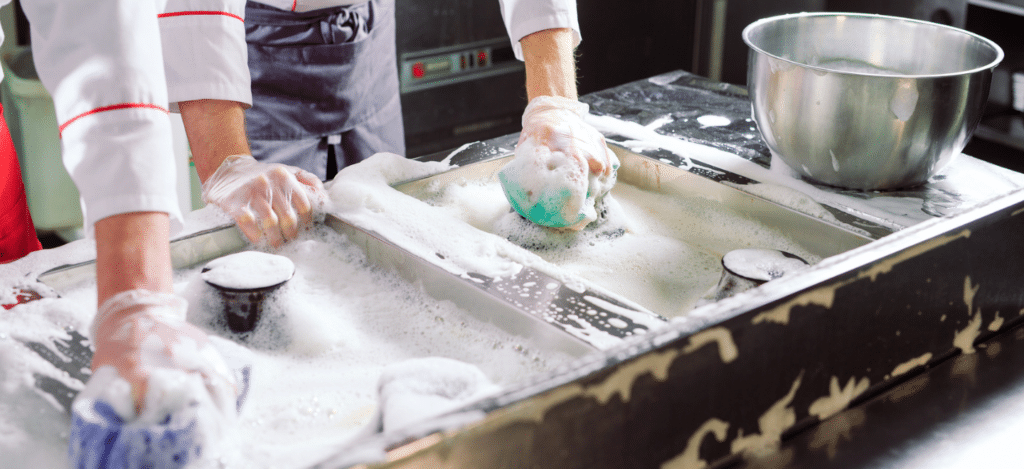
In professional kitchens, Acetone is widely employed for tackling stubborn grease build-up, making it an indispensable tool for maintaining hygiene and safety in culinary environments.
Environmental Footprint
With its rapid evaporation, Acetone doesn’t just disappear into thin air; it contributes to air quality regulations. Managing and disposing of Acetone is essential to prevent environmental contamination.
Acetone, a humble compound with a world of versatility, offers a cornucopia of benefits across industries. As a solvent, it’s unparalleled in its efficacy. Its rapid evaporation and compatibility with other solvents make it valuable in laboratories and industrial applications. From cosmetics to pharmaceuticals, Acetone’s reach is boundless. However, its flammability calls for cautious handling.
With the proper precautions, this versatile compound can continue to shine in myriad applications, proving that, sometimes, unassuming substances play the most remarkable roles.
What Influences the Cost of Acetone?
Acetone isn’t just a versatile compound; it’s also subject to price fluctuations influenced by several factors. Various elements shape the cost of Acetone, each playing a unique role in determining its market value.
Raw Material Prices: The cost of raw materials, such as isopropyl alcohol (IPA) and cumene, used in acetone production can significantly impact its price. Fluctuations in the prices of these feedstocks directly affect the overall cost of Acetone.
Production Process Efficiency: Efficient production processes can lead to cost reductions, thus impacting the price
How Can We Help?
At Redox, we have established dynamic, solid relationships with clients and suppliers due to our commitment to quality assurance and attention to material handling processes. Constant review and management of all our changing processes ensures we maintain best business practices while acting in accordance with the relevant industry standards.
To discuss how we can supply Acetone safely and at a competitive price that ensures you are ahead of your market, contact us today and explore how we can become an invaluable partner in your procurement strategy.
Discover the ground-breaking advancements of WS23, a cooling agent that is reshaping sensory experiences across various industries with its cutting-edge technology.
2-Isopropyl- N,2,3-trimethylbutanamide, otherwise called WS23, finds versatile applications in candies, beverages, oral care, skin care products, and pharmaceuticals. Its enhanced cooling properties and compatibility with diverse flavours elevate sensory experiences and address challenges in taste-centric product development.
WS23 is a prominent member of an esteemed series of cooling agents. Its market leadership is reinforced by solid demand from renowned brands like P&G, Mondelez, and Mars in the U.S.
The WS series of cooling agents offers a variety of options, including WS-1, WS-3, WS-10, WS-12, and WS-27, each with varying levels of cooling potency and duration. Among these, WS-3 and WS-23 are the most favoured choices.
Key Features
- Innovative Cooling Sensation: A distinctive and enduring cooling effect lasting 15 to 30 minutes. WS23 sets itself apart from the discomfort often associated with cooling agents derived from menthol or peppermint.
- Uncompromised Thermal Stability: Designed to withstand temperatures up to 200°C, it is an ideal choice for high-temperature applications such as baking and heat-based industries.
- Flavour Compatibility: WS23 seamlessly blends with various flavours, making it an adaptable addition to different product categories.
- Efficiency Optimization: Achieve a potent cooling effect with a minimal dosage range of 30-100mg/kg, leading to substantial cost benefits for manufacturers.
Technical Specifications
This white crystalline solid powder exhibits a distinctive mint-like cool aroma that sets it apart. Notably, WS23 boasts a melting point of 60-63°C and a solubility profile that renders it slightly soluble in water while finding compatibility with alcohol, Propylene Glycol, and various oils as efficient solvents.
With a content purity of no less than 99.0%, WS23 has garnered recognition from different authoritative bodies, including FEMA (3804), JECFA (1595), and Flavis (16.053). This compound’s multifaceted attributes open the door to various potential applications across industries, offering a refreshing avenue for altering sensory encounters.
How can we help?
We eagerly anticipate the ongoing success and innovation that WS23 Isopropyl Trimethyl Butyramide will bring to our portfolio and industries.
Contact your dedicated Redox representative and one of our team members will get back to you.
A surfactant, also known as a surface-active agent, is a substance that lowers the surface tension between two substances. It is a molecule that contains both hydrophilic (water-loving) and hydrophobic (water-hating) parts, allowing it to interact with water and oil.
Surfactants are a wide spectrum of products but are broadly classified as Anionic, Nonionic, Cationic or Amphoteric depending on whether the electrical charge is positive, negative or neutral on the hydrophilic head.
Surfactants are commonly used in cleaning products such as detergents, soaps, and shampoos. They can break down oils and dirt and help them mix with water for easier removal. They are also used in industrial processes such as oil recovery and in medical applications such as lung surfactants, which help maintain the structure of the lungs and prevent collapse.
Examples of surfactants include sodium lauryl sulphate, commonly found in household cleaning products and personal care items, and polysorbate 80, used in food, cosmetics, and pharmaceuticals.
Surfactants are used in a wide variety of products, including:
- Detergents and cleaning products: Laundry detergents, dishwashing liquids, all-purpose cleaners, and bathroom cleaners all contain surfactants that help to remove dirt, oil, and grease from surfaces.
- Personal care products: Shampoos, body washes, hand soaps, and toothpaste all contain surfactants that help to clean and remove oils from the skin and hair.
- Cosmetics: Makeup removers, facial cleansers, and body wash contain surfactants that help break down and remove makeup and other impurities.
- Food and beverages: Emulsifiers and stabilizers are surfactants used in food and beverage products to help mix ingredients that would not usually mix well, such as oil and water.
- Agriculture: Surfactants are used in agricultural products, such as herbicides and pesticides, to help them stick to plants and improve their effectiveness.
- Petroleum: Surfactants are used in the petroleum industry to improve oil and gas flow through pipelines and help recover oil from underground reservoirs.
- Lubricants: By adding surfactants to car engine lubricants, it becomes possible to prevent particles from adhering to engine parts, enabling the parts to move smoothly and maintain the proper functioning of the car.
Surfactants have several unique qualities that make them useful in a wide range of applications:
- Surface tension reduction: Surfactants have the ability to reduce the surface tension between two substances, such as water and oil. This allows the substances to mix more easily and enhances the ability of the surfactant to clean, emulsify, or disperse.
- Amphiphilic nature: This unique structure allows surfactants to interact with water and oil hydrophilic (water-loving) and hydrophobic (water-hating), essential for their cleaning use and emulsifying.
- Self-assembly: Surfactants can self-assemble into organized structures, such as micelles or bilayers, in certain conditions. This allows them to form stable emulsions, which are essential in creating many products such as lotions, creams, and paints.
- Interfacial activity: Surfactants are active at interfaces, such as the boundary between two liquids or a liquid and a solid. They can adsorb to the surface of a substance, which can change its surface properties, such as its wetting or adhesion behaviour.
Overall, these unique properties make surfactants extraordinarily versatile and valuable in a wide range of applications, from cleaning products and personal care items to industrial processes and medical applications.
Mint has been rumoured to have been in use across Japan for more than 2000 years, alleviating fever symptoms, headaches and re-energising both the body and the mind. In the west, we’ve come to appreciate these same effects.
Mentha Arvensis Botanica, typically known as Mint, Corn Mint, Wild Mint, and Japanese Mint, is used to produce Menthol Crystals. Menthol Crystals are a waxy substance and a solid component of Mint Oil. The Mint Essential Oil is derived from the Mint leaf through distillation.
This Mint Essential Oil is then frozen at -22 degrees Celsius. The freezing of the Essential Oil causes it to crystalise, forming Menthol Crystals.
They are similar to Mint Essential Oil because they offer the same wide range of benefits. On the other hand, they are highly concentrated, and only small amounts are required for effective relief.
Menthol may help alleviate symptoms of sickness –
- easier breathing,
- nasal congestion relief,
- soothing sore throats, coughs, and sinus discomforts,
- immunity support, and
- stabilisation of emotions
What Industries are using them?
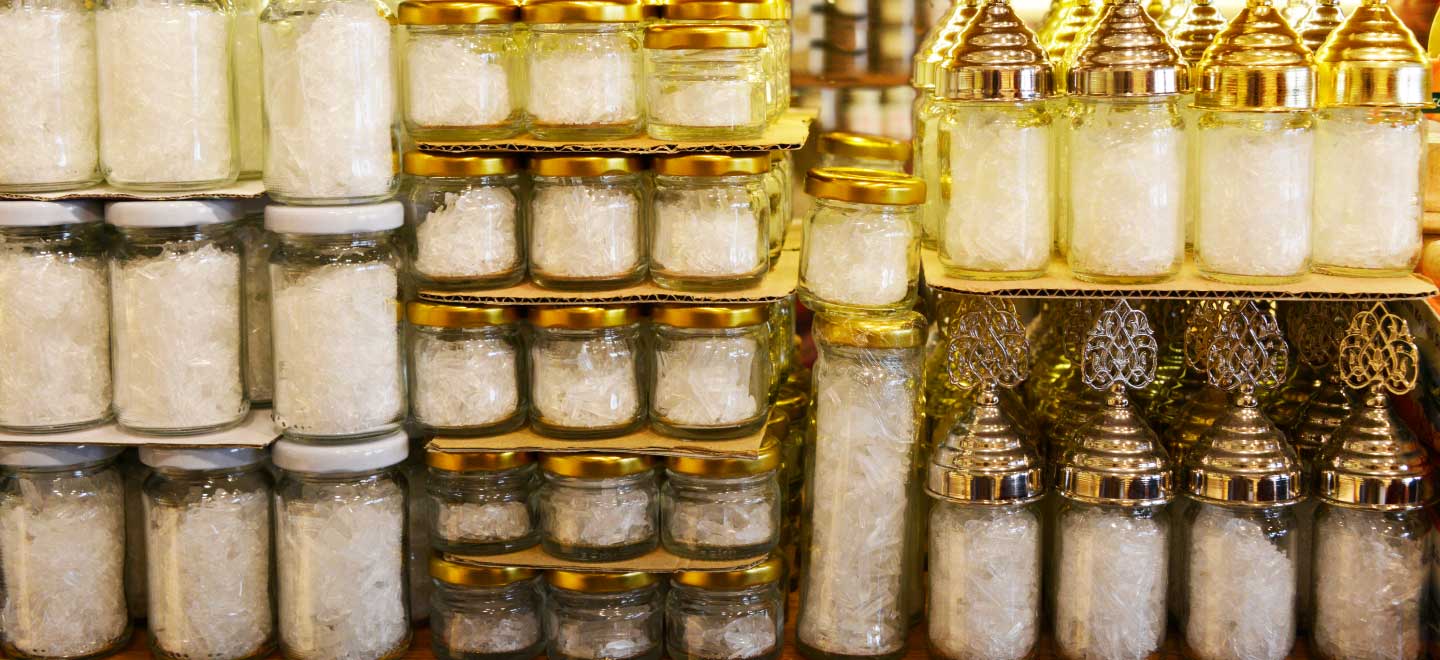
Menthol Crystal use is universal: a store in Istanbul selling Menthol Crystal for cooking, therapeutic uses as well as use in a traditional hookah.
The worldwide Menthol Crystal market is growing at a tremendous rate, with its highest growth rates in recent years, and it is anticipated to surge even more between 2020 and 2027.
Their uses and benefits:
In Personal Care and Cosmetics
- It is a critical ingredient in skin and beauty products and carrier oils.
- Its minty, fresh scent is frequently used in fragrances, lotions, and colognes.
- It helps relieve skin irritations, soothe itchy and dry skin, and revitalise and rejuvenate the skin.
- It helps to nourish and strengthen the hair and promote healthy hair development.
For the Pharmaceutical Industry
- commonly used to help with digestive and stomach disorders,
- may relieve nausea sensations, reduce discomfort, and
- can reduce fever and headaches, among other things.
In Aromatherapy
- Menthol Crystals are frequently used in aromatherapy to induce a tranquil state of mind, lowering anxiety and stress.
- It contributes a cooling sensation to the skin and calms irritation, itching, and burning.
Menthol Crystals from Redox
Our Menthol Crystals meet rigorous standards while retaining nature’s genuine essence and taste.
They are available in various packing sizes, including 25kgs fibre drums and come in multiple qualities we routinely supply to our customers around the globe.
Redox is in a great position to meet and exceed your expectations. Contact one of our specialists or fill in the below form to learn how Redox can become an integral part of your sourcing strategy.
Lactic Acid is a versatile material found in a variety of innovative products that was first discovered by the Swedish chemist Carl Wilhelm Scheele in 1780 and produced commercially by Charles E. Avery in 1881.
It’s Applications in Industry?
Lactic Acid is a naturally occurring organic acid utilised in various industries, such as cosmetics, pharmaceuticals, chemicals, food, and, most recently, medical industries.
In the food industry, which accounts for a large portion of the demand (35%), it has several uses:
- It acts as an acidifier for bread,
- prevents the development of harmful bacteria in pickles, relishes, salad dressings,
- adds a mild-tasting sourness to beverages and candy,
- In dairy products, it is used to prevent fermentation and,
- It is an essential ingredient in fermented foods, like yoghurt, butter, and canned vegetables.
However, it is also used as an antimicrobial in cleaning products, has applications in the leather tanning industry, in descaling processes, in the textile industry as a mordant (fixative) for dyeing, and can be converted to ethanol, propylene glycol, and acrylic polymers in the chemical industry.
Although it’s been commercially available for a long time, it is only in recent decades that new uses have resulted in a tremendous increase in demand.
For example, its an essential building block in producing a range of new and innovative bioplastics, PLA or Polylactic Acid – the new generation of biodegradable polymers.
The use of Lactic Acid in manufacturing environmentally friendly, green solvents is another area for significant potential growth. Using it as a green solvent enriches the diversity and versatility of bio-based green solvents and could offer an effective means for designing environmentally benign synthetic systems.
Its application and innovative usefulness seem ever-growing, and in 2010, it was included in a report issued by the U.S. Department of Energy on chemicals that are considered potential building blocks for the future.
Lactic Acid from Redox
Redox is proud to work with leading manufacturers of Lactic Acid and Lactates globally and can create solutions for all customer requirements.
Redox supplies Lactic Acid in the Australian, New Zealand, Malaysian, and North American markets and is available in various packing sizes. These include 25kg carboys, 250kg steel drums and 1200kg IBCs.
We offer it in a range of varied strengths, with a powder form also available for specific applications. Our Lactic Acid conforms to the Food Chemicals Codex (FCC), ensuring our product’s overall safety and integrity.
Contact one of our experts to discover how Redox can be an essential element of your sourcing strategy.
The development of surfactants based on carbohydrates and oils is an exciting expression of the ‘green chemistry’ that led to new surfactant classes: namely, alkyl polyglucoside (APG).
It was first developed in 1893 by German Chemist Emil Fischer via a process that relied on the acid-catalyzed reaction of dextrose with fatty alcohols. Following a costly and time-consuming research and development process, Henkel successfully created an industrial production method for APG.
Alkyl polyglucoside is a mild, naturally derived non-ionic ‘Green’ surfactant in liquid form and is entirely biodegradable, safe for humans and the natural environment.
Some Ingredient Highlights
- Produced from natural, renewable resources
- Non-ionic surfactant, compatible with all surfactant classes
- Readily biodegradable
- Very cost-effective
- Extremely mild surfactant/emulsifier
- Excellent emulsifying properties
- Excellent skin compatibility
- Outstanding foam behaviour with surfactants
- Excellent cleaning performance
APG Applications in Industry?
The use cases for Alkyl polyglucoside are innumerable, with an estimated global market worth $1.1B and projected to increase over 8% during 2021 – 2031.
APG is typically used to enhance the formation of foams in detergents (surface cleaners, dishwashing and laundry detergents), but because it’s biodegradable and safe for sensitive skin, it has also found multiple applications in the personal care sector, including:
- Bath Products
- Cleansers & Wipes
- Oral Care
- Cosmetics
But its uses extend beyond these;
- APG can be used in fire equipment as a foaming agent,
- in the paper industry, it improves the softness of paper,
- As a fabric softener and dyeing auxiliaries in the textile industry,
- it can even be used as a gel, lubricant and wetting agent.
APG from Redox
Redox’s Alkyl polyglucoside is available in various packing sizes, including drum and IBC configurations, coming in a range of INCI classifications:
- Caprylyl/ Capryl Glucoside
- Caprylyl/ Capryl Glucoside
- Lauryl Glucoside
- Decyl Glucoside
With activity levels ranging from 50% to 70%.
Presently quotations from our manufacturing partners are valid for two days max due mainly to the fact that fatty alcohols are being diverted to make biodiesel.
Biofuels have become more economically attractive due to recent skyrocketing crude oil prices, so it’s crucial you work with a supplier that can secure consistent quality; Redox is in an excellent position to fulfil and exceed your expectations.
Contact one of our experts to discover how Redox can be an essential element of your sourcing strategy.
In 1814 a German scientist named Friedrich Ferdinand Runge developed a method to extract pure cocoa powder into its most potent form. The result was a white powder containing both fat molecules (known as acids) and sugars, which create energy when digested in our body. Today that substance (caffeine) is easily extracted and used to make various products we consume daily.
Caffeine and its numerous uses
We all know that caffeine is found in our daily coffees and teas; some might also be familiar with its move into the energy drinks and the sports performance markets. The reason it has been so effective and popular in these products is that caffeine keeps us awake, alert, and active whenever a little more energy is needed.
A lesser but more recent use case is caffeine in hair care products. Caffeine boosts hair growth by stimulating the hair roots. Haircare products with caffeine also strengthen the hair itself and make it more manageable on a day to day basis.
And it’s not just used in women’s hair products. Many men face early hair loss due to the effects of the male hormone dihydrotestosterone (DHT), which acts on susceptible hair follicles. Caffeine penetrates the hair roots and stimulates them, delaying or subverting male pattern baldness.
Whether it’s brewed from an espresso, downed in sweet tea, savoured in chocolate or consumed in cola, caffeine is a mild stimulant to the central nervous system that has become a standard fixture in everyday life.

The main benefit of caffeine is that it can help promote hair growth straight from the root in the initial phases of hair growth
Synthetic v Natural Caffeine
These days the majority of the caffeine used in the market is synthetically derived as it is more cost effective to produce than the natural manufacturing process. Caffeine is found naturally in plants that humans have been consuming for thousands of years such as fruit, leaves, coffee beans, cacao, and guarana plants.
Caffeine: did you know?
Here are some fascinating facts about caffeine to consider:
- Coffee, soft drinks, and tea account for 97% of beverage caffeine consumed in the United States, with coffee accounting for the most significant proportion.
- Studies suggest that it can improve mood and concentration, sharpen your focus, and increase lifespan.
- Caffeine has been shown to enhance physical performance by 3%. Aside from telling your brain it’s not tired, caffeine improves calcium release in our muscles, allowing them to work harder.
How can we help?
Working with a supplier that can guarantee consistent quality is critical; Redox is in a great position to meet and exceed your expectations.
We offer both synthetic and naturally derived sources of caffeine across all regions. The supply of this item has been challenging for the past couple of years and requires a lot of planning to ensure continuity of supply. To avoid disruptions, Redox encourages its customers to plan ahead assuming long lead times than in the past.
Contact one of our specialists to learn how Redox can be an integral part of your sourcing strategy.
Glycerine, Its name comes from the Greek word Glykys, meaning sweet, but this once considered insignificant product sprung from less humble beginnings.
Glycerine is a trihydric Sugar Alcohol (polyol) that presents as a colourless, odourless, viscous and slightly sweet liquid. It is commonly used as –
• A sweetener, to make medicine more palatable
• A Humectant, to keep foods moist
• A moisturiser, to keep skin supple
• A solvent, to carry flavours/colours and to dissolve grime
• A plasticiser, to improve texture in, icing/frosting and confectionary
• A lubricant, to maintain the machinery that manufactures surface coatings, resins, paper, rubber, plastics and urethane polymers.
Let’s dig a little deeper shall we.
In the beginning…
Glycerine was first synthesised in the late 1700’s by soap manufacturers but at the time, it was considered an economically insignificant product. In 1846 Nitro-glycerine is developed by Ascanio Sobrero by treating glycerol with a mixture of nitric and sulphuric acid. Then in 1866, a Swedish chemist named Alfred Nobel developed Dynamite, an improvement of nitro-glycerine.
Feats of engineering such as the Panama Canal and Central Pacific Railroad would not have been possible without dynamite. Suddenly, Glycerine was no longer considered an economically insignificant product.
From economically insignificant to a necessity.
Glycerine is now produced on a much larger commercial scale by hydrolysis or transesterification of vegetable oil, which produces fatty acids, soap noodles, or Biodiesel whilst generating crude glycerine as the by-product.
Crude glycerine is further refined by vacuum distillation and bleaching with activated carbon to produce a 99.7% pure pharmaceutical grade material that is safe for human consumption, and is a necessary component in a variety of household products, most notably food, cleaning agents and toiletries.
And because Glycerine is a humectant, it is commonly used in skin care products with other types of moisturizing agents, to trap the moisture that it then draws into the skin.
According to a 2016 study, Glycerine is “the most effective humectant” in comparison with numerous others.
Where can I get it?
Redox supplies thousands of tonnes of Glycerine annually to customers based in New Zealand, Australia, Malaysia and USA, including to some well-known multinational brands whose everyday products are likely sitting at home in your Kitchen, Bathroom, or Laundry.
Want to know more? Contact one of our industry specialists today and ask them about Glycerine.
Found naturally in green tea, the commercial grade Phenoxyethanol is synthetically produced in a laboratory creating what’s termed a “nature identical”.
Introduced in the 1950s, it has had a long history of safe use as a cosmetic preservative. In recent years, the use of phenoxyethanol has expanded due to its low sensitization potential and global approval.
Chemically known as a glycol ether which means it is a solvent, Phenoxyethanol is a preservative used in many cosmetics and personal care products. You probably have a cabinet full of products containing this ingredient in your home, whether you know it or not. It’s also used as an anti-bacterial in detergents and as a stabilizer in perfumes.
Phenoxyethanol doesn’t react with other ingredients, air or light; this kind of stability makes it an especially effective preservative.
You find it being used in products such as:
• Lotions,
• Shampoo and conditioner,
• Skincare,
• Perfumes
However more recently it is also being used to manufacture antibacterial hand soaps that are being sold to local department stores.
You may have heard of concerned around this ingredient because there’s quite a bit of controversy about its safety, especially online. Almost all of the studies that have found significant negative health impacts are based on full-strength or high-dose exposures. Undiluted Phenoxyethanol, is never used in skincare or cosmetics, in reality exposures are quite small. Hence why it’s approved at levels up to 1%. It’s all about the final formulation.
In the previous 12 months, Redox has sold 184,800 kg of Phenoxyethanol into the USA and 11,600 kg into Australia.
If you’d like to know more, please contact one of our industry specialists today.
Our Partnering Manufacturers


